This post is sponsored by Neutrogena.
Retinol is one of the most popular anti-aging skincare ingredients, but it’s also one of the trickiest when it comes to choosing a product, and one of the ones where looking at the percentage and analysing the INCI list doesn’t quite cut it.
There’s a common perception that drugstore skincare is ineffective, and only brands that prominently advertise active ingredient percentages are worth using. But this ignores the fact that a lot of mass-market brands have parent companies with the resources to conduct more rigorous research. Many of them produce pharmaceutical products as well, so they have greater expertise in creating effective formulas.
In today’s post, I’m going to be talking about some of the issues with retinol products, and how Neutrogena Rapid Wrinkle Repair Regenerating Cream gets around these. Their parent company Johnson & Johnson released Renova, the first anti-aging tretinoin formulation in 1995, and they conduct and publish a lot of original research on retinol and other skincare ingredients.
What is retinol?
Retinol is a vitamin A derivative (a retinoid). Once it’s in your skin, it’s converted to retinaldehyde then retinoic acid or tretinoin, the active form. Tretinoin is a prescription-only skincare ingredient (it’s the active ingredient in Retin-A), but retinol is widely available in cosmetic products, and it’s the most popular vitamin A derivative.
Since two conversion steps are necessary for retinol to become active, it isn’t as potent as tretinoin, as not all of it will convert at the same time. This is why we find higher percentages of retinol in skincare products than tretinoin. The conversion of retinol to retinaldehyde is also reversible, so retinol has a sort of “depot” effect, where it stays in the skin and is slowly converted to tretinoin.
Once in the skin, it works to increase skin turnover – in other words, it speeds up cell renewal, so older cells slough off faster and newer cells are produced more rapidly. This is a process that slows down with age, hence why it’s an anti-aging ingredient. In the process, pigmentation is faded, skin texture improves and lines and wrinkles are less obvious.
Issues with retinol
Stability
One of the big issues with retinol is stability. Retinol breaks down when exposed to oxygen and light, but there are lots of ways that it can be stabilised. Obviously, if retinol isn’t adequately stabilised, it’ll break down and you’ll have negligible concentrations left in the product by the time you apply it. This stability problem is one of the main reasons looking at the percentage of retinol isn’t all that helpful when comparing retinol products. Even if 1% was placed in the product at the start, by the time you use it on your skin, there might be negligible retinol left.
Related post: Scientism or “Science-Washing” in Beauty
There’s a lot of variation in the market. For example, one popular brand’s budget-friendly retinol product that comes in a dark dropper bottle has to be kept in the fridge, and you’re still meant to throw it out after 3 months. On the other hand, Neutrogena’s Rapid Wrinkle Repair Regenerating Cream comes in a jar – traditionally assumed to be an unstable form of packaging – and has an impressive period-after-opening (PAO) of 24 months, thanks to its effective stabilisation.
Absorption and Irritation
Absorption is also a problem. Skin has evolved to be very resilient, which means it can be difficult to deliver active ingredients into the skin, especially since retinoids need to penetrate to work.
While retinol is very potent, it’s also pretty irritating, with dryness, redness and flakiness being very common. The irritation depends a lot on the formula – for example, creams tend to be less irritating than gels, and time-release formulations that deliver retinoids slowly into skin are gentler.
Related post: My Routine for Starting on Tretinoin (Retin-A) Cream (with video)
Neutrogena’s Rapid Wrinkle Repair range uses Accelerated Retinol SA, which uses retinol SA (SA stands for sustained action), glucose complex (Myrtus Communis leaf extract), and hyaluronic acid. This combination speeds up the action of retinol, and helps fortify the skin barrier to reduce irritation and rapidly fades fine lines and wrinkles. The “sustained action” part refers to the patented blend of emollients in the cream, which optimises and slows down the delivery of retinol into the skin to minimise irritation.
As I’ve discussed before in my post on anecdotal evidence, one of the best things to look for is testing on the finished product. For Neutrogena Rapid Wrinkle Repair Regenerating Cream, the delivery of retinol into the skin (where it needs to be to work) has been tested. There are also clinical tests on its ability to fade the look of crow’s feet and forehead and cheek wrinkles, improve the appearance of undereye wrinkles and smooths fine lines and brightens skin tone. Impressively, 100% of women in their test had noticeable results after just 1 week of use.
I personally found Neutrogena Rapid Wrinkle Repair Regenerating Cream really nice to use. It’s a richer texture that works well for my skin in drier weather, and when it’s dehydrated – I’d expect it works well for people with normal to dry skin as well.
Since my skin has already adjusted to using a prescription tretinoin cream twice a week, unsurprisingly I had no irritation from this even when using it every night. The directions say you can apply a pea-sized amount twice a day. I’ve found myself reaching for this on nights when my skin is too irritated for tretinoin. This cream has also been handy for using around my eyes. I usually avoid my eye area when I’m applying my tretinoin cream, since it can be a bit too irritating for the thinner skin there, but it’s one of the spots where I’m starting to see wrinkles. Rapid Wrinkle Repair Regenerating Cream is gentle enough for me to apply on my crow’s feet.
It has a light cucumber-floral scent – if you prefer no fragrance, there’s also a fragrance-free version of this cream.
Ingredients: Water, Pentaerythrityl Tetraethylhexanoate, Glycerin, Dimethicone, PPG-15 Stearyl Ether, Stearyl Alcohol, Cetearyl Alcohol, Butylene Glycol, Glyceryl Behenate, Ceteareth-20, Isohexadecane, Cyclopentasiloxane, Dimethicone Crosspolymer, Polyethylene, Sodium Polyacrylate, Phenoxyethanol, Caprylyl Glycol, Sodium Acryloyldimethyltaurate/VP Crosspolymer, Polyacrylamide, Fragrance, C13-14 Isoparaffin, PTFE, Chlorphenesin, Polysorbate 20, Hydrolyzed Myrtus Communis Leaf Extract, Retinol, BHT, Sodium Hyaluronate, Disodium EDTA, Laureth-7, Sodium Hydroxide, Ascorbic Acid
Do you use a retinoid? How have you incorporated it into your skincare routine?
Neutrogena Rapid Wrinkle Repair Regenerating Cream has a RRP of $31.99 USD, or $49.99 AUD.
This post is sponsored by Neutrogena; however, the content is all based on my independent research and my honest experience. For more information, see Disclosure Policy.
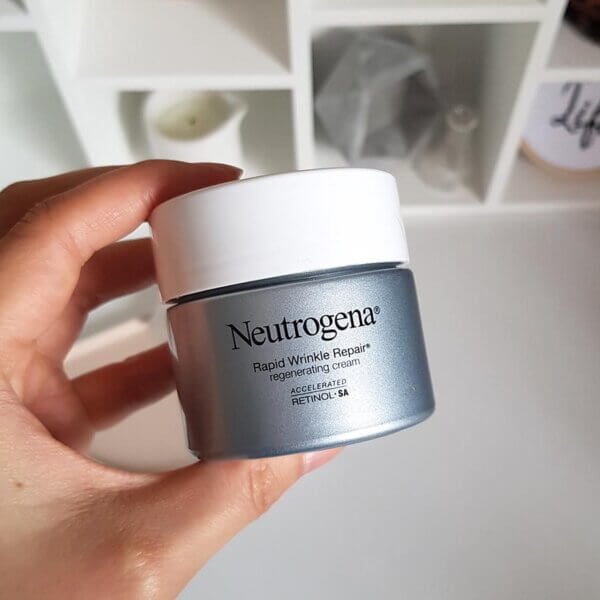
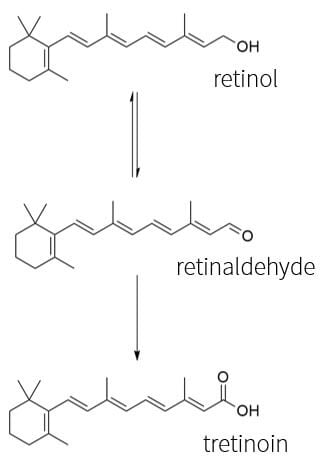
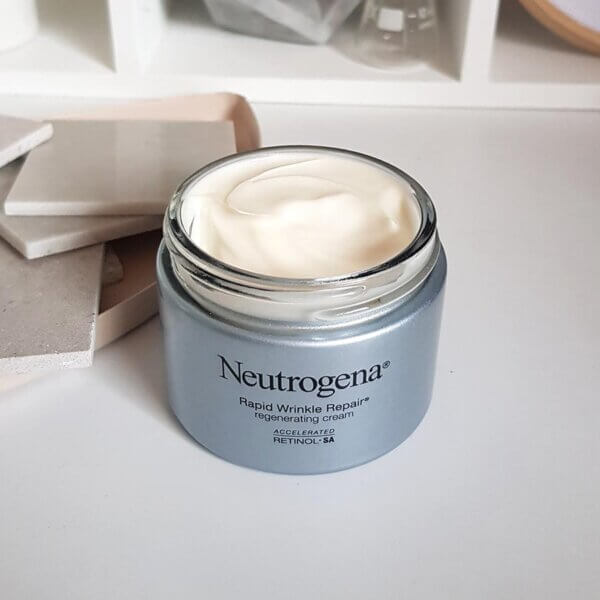
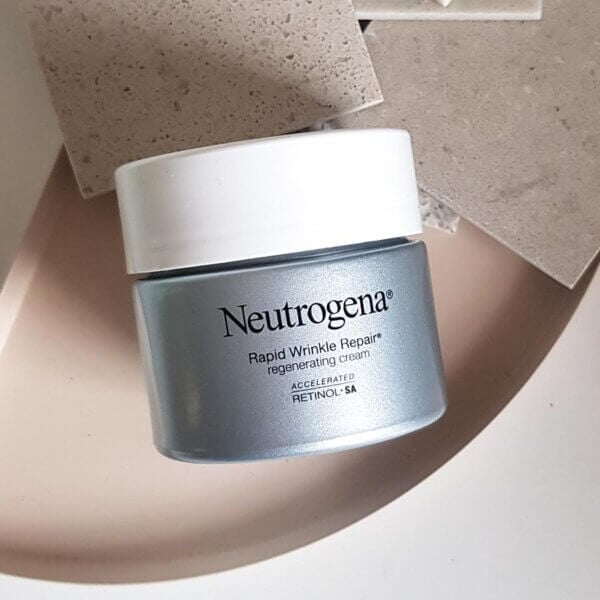


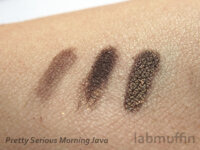
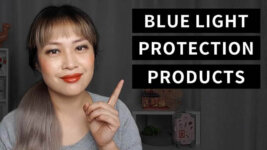
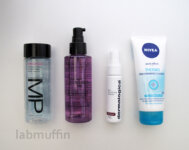
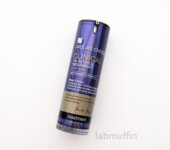
This is so helpful! I think they also make an eye cream but good to know it’s gentle enough for the under eye area.
You didn’t mention retinyl palmitate in the article – is it not as effective as regular retinol? I’ve read it could be comodegenic.
Thx!!
I know that all that comes to fragrance is totally about my personal experience, but it’s very hard for me to use this particular cream due to its scent. It’s heavily floral to me and the scent stays on the skin for at least an hour after application. It was my mistake not to buy a fragrance-free version.
Thank you for this post! What do you think of the serum in this same line (not asking you to spend a bunch of time trying it, just wondering if you know anything about it)? The store near me only has the serum 🙁
I used The Ordinary’s .5% retinol in squalane as my first retinol. I have pretty hearty, normal skin and had no reaction of any kind. I did proceed gradually, though: once a week for a month, then twice a week, then twice a week with an AHA in between. Then I saw your interview with the formulator from The Ordinary who gave the info about it going bad/worthless in 3 months, so I may not have been getting any retinol at all! Now I am using Stratia Skin’s Night Shift. It is formulated in a lovely cream. I am doing the same twice a week plus AHA schedule. Again, no reaction of any kind. The Neutrogena looks good and certainly is easy to get. I’ll wait, though, until I need it. Despite its shelf-life, I don’t need any more skin care on my shelves waiting for me to finish something else!!
Hi Michelle, I actually bought this as I heard it was a good starter retinol for people with sensitive skin. But now I’ve realised that it only contains about 0.025% retinol, which is tiny. Do you feel that retinol can actually be effective at such low concentrations? I’m also very confused that the directions say this cream can be applied twice a day, since the usual retinol advice is to use only at night.
I haven’t been able to find the percentage and was curious where you found the percentage.
I’ve just bought the Palmers Skin Success Fade Cream (For All Skin Types). It’s got retinol in it but doesn’t irritate my skin like a serum does. It’s an interesting texture so I use it at night when my face is slightly damp. Would be interested to hear your thoughts on this product.
Thanks for sharing about this product. Found a double pack at Sam’s club very well priced. I love the feel of the cream, the smell and how bright my skin looks. It’s smoothing my neck wrinkles and the fine lines on my face. I’ve had no irritation to my skin.
I followed the instructions on the jar to use it twice a day and by day three I had a lot of flakey skin (but not in the target area). I’ll change to a night time only routine and only on my forehead and angry 11s going forward to see if it improves.